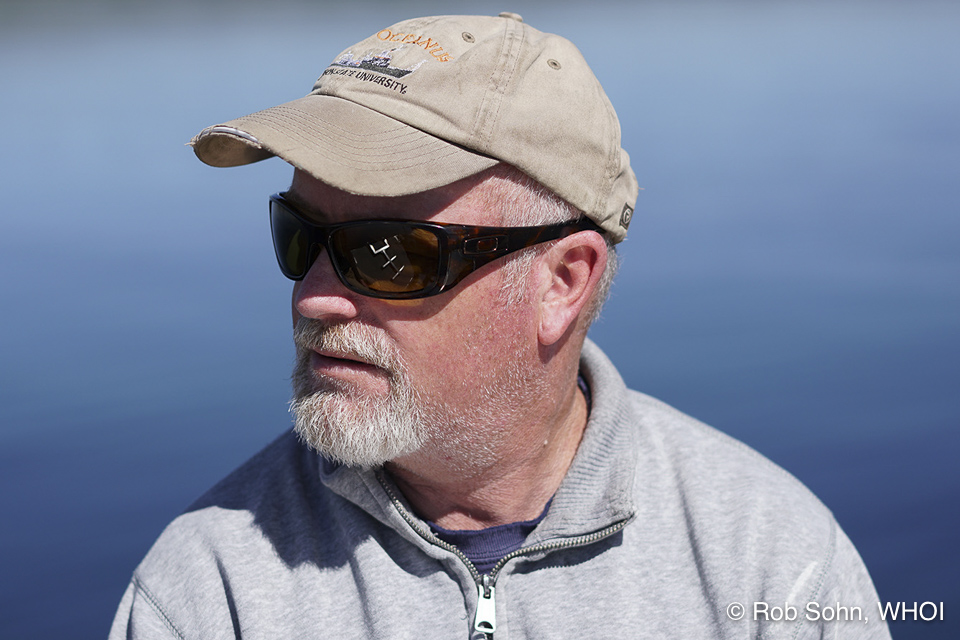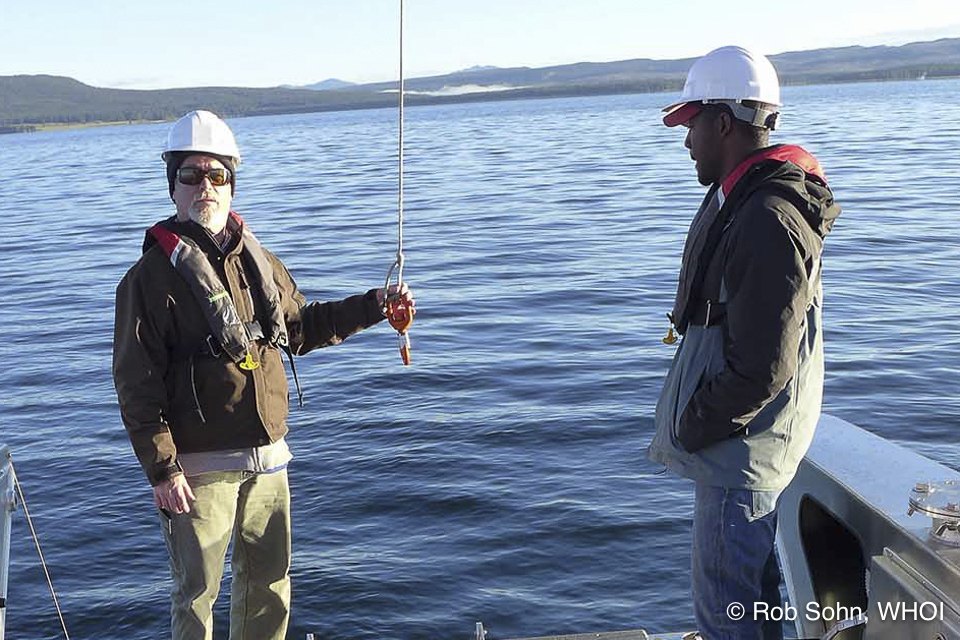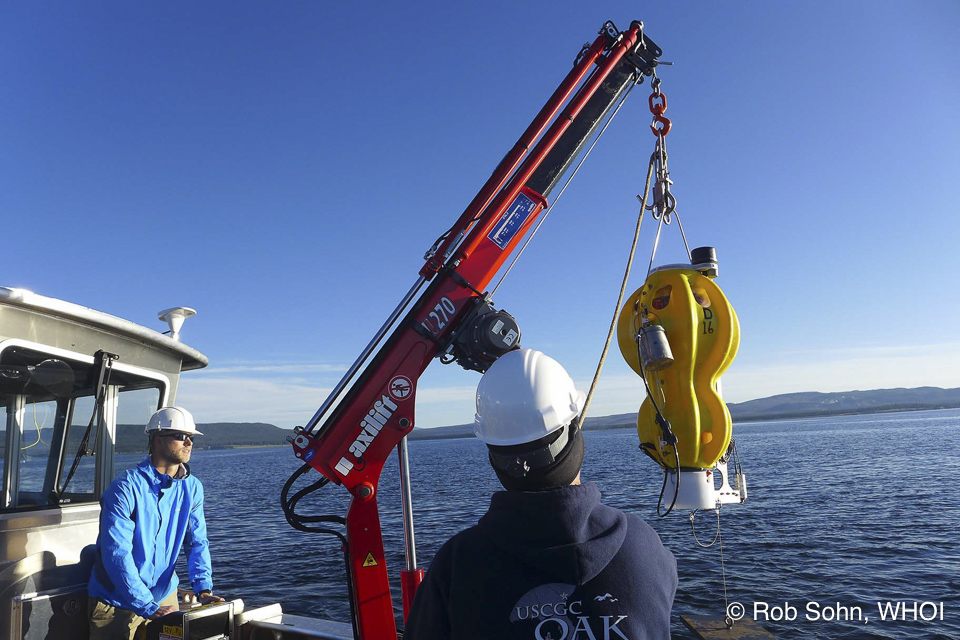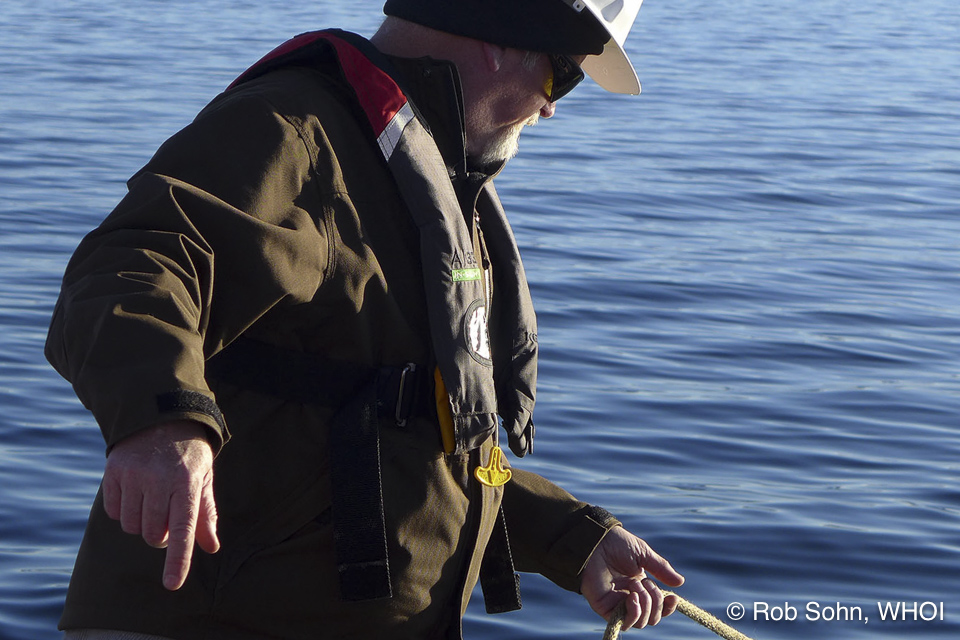We are deploying seismometers on the lake floor to measure small earthquakes generated by hydrothermal fluid flow and to understand how they may migrate along fault surfaces. This is the first time that a seismometer will be deployed in the lake, so we don’t know what kind of noise levels and event rates to expect in the data. Before deploying a full-scale seismic network in 2017, our goal this year is to measure the noise levels and establish event rates during a ~1 month period from July to August. Photos by Rob Sohn, WHOI. Work was completed under an authorized Yellowstone Research Permit.






The master - The seismometer team is led by Tim Kane, an accomplished engineer who is part of the Woods Hole Oceanographic Institution’s Ocean Bottom Seismometer lab. Work was completed under an authorized Yellowstone Research Permit.
The rookie - Paris Smalls is the other half of the seismometer team. Paris is a new student in the MIT-WHOI Joint program, and had never even seen a seismometer until about a week ago! Work was completed under an authorized Yellowstone Research Permit.
The seismometers are strapped to the deck for the transit from Bridge Bay to the deployment site. Once on site the front hatch of the boat is lowered and the crane is used to pick up the seismometers. Work was completed under an authorized Yellowstone Research Permit.
The seismometer is raised and held above the deck so that the anchor plate can be fastened. It’s not too hard in calm weather! Work was completed under an authorized Yellowstone Research Permit.
The completed instrument is lifted with the crane and lowered into the water. The geophone, the sensor that actually measures ground motion, is in the gray can fastened to the side of the yellow hard hat. It is attached on an arm with a ‘sugar’ release, which starts dissolving upon immersion in water, and eventually allows the geophone to be placed directly on the lake floor. Work was completed under an authorized Yellowstone Research Permit.
When Tim pulls on the rope in his left hand the instrument will be released from the crane and will free fall to the lake floor, some 90 m below in this case. Notice how deftly he is signing for the crane operator to go out on the whip with his right hand. Work was completed under an authorized Yellowstone Research Permit.



